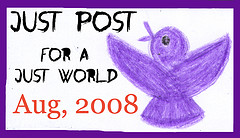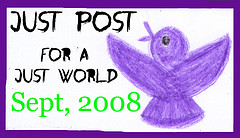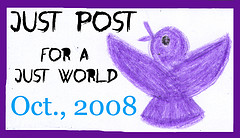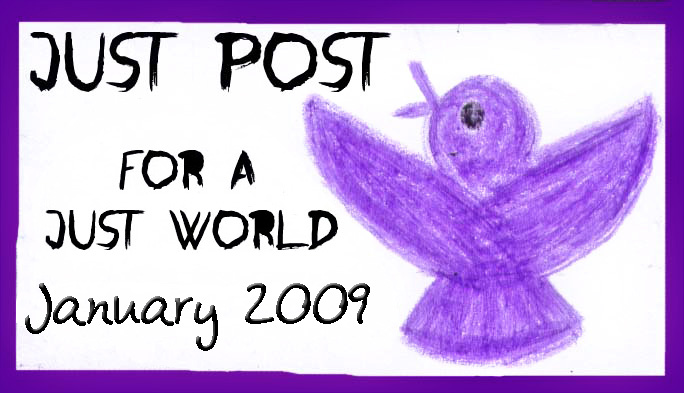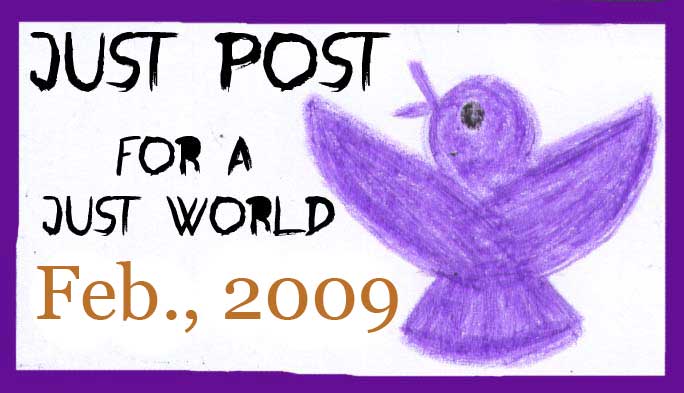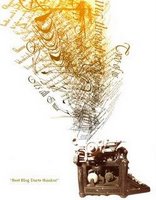The one where Holly mets a political candidate and goes crazy about healthcare
We met a candidate for public office today. Briefly, but we met. I shook her hand, took her flyer, and engaged in 3 seconds of conversation where she politely complimented our family, street, and neighbors. She seemed like a perfectly nice, pleasantly scattered lady who would make a very good neighbor. Just the type to swap recipes, seek out for child-rearing advice, or ask to watch the house while you go out of town.
Public office? Well. Maybe not.
It’s not about the issue of the first and last names being the same, really. And it’s not anything about her, personally. It’s not because her circa-1995 web-page has more typos than some of the worst college freshman papers I’ve ever read. And not because I’m completely perplexed about what that “post graduate degree in Health Care Administration” means (do you mean an MPH? that’s a graduate degree… so do you mean another doctoral degree, in addition to the PhD and MD that it says she already has from LSU?)
No, it’s not about any of those things (although each concerning in their own way). The reason that she’s unfit for Senate is because of seriously whack things like her thoughts on how to improve health care in Louisiana. This is her “healthcare plan,” in its entirety, from start to finish:
Creating effectiveness within our Healthcare system, electronic data capture, standardization of insurance forms, electronic submission, “smart cards” to help both providers and patients with demographic and eligibility data, utilizing the quality care organizations in our state to identify at risk groups, i.e. diabetes and enhance intervention programs.
It’s ridiculous on many levels. One of them is the shocking realization that this mess of a run-on sentence was written by such a highly decorated scholar. Yet another comes out of actually trying to understand what she is saying (which takes some work) and realizing how alarming it is to think that it came from someone working in medicine. (As an ophthalmologist. In private practice. Apparently, that is what you do when you have at least two, and possibly three, major terminal degrees.)
What I want to run away with here is the “card” system mentioned in the tangled web above. This, along with her gag-worthy proposal (mentioned randomly on her neighborhood flyer) of making Charity run both private and public clinics “to make it financially independent,” speaks to a larger issue within healthcare. Namely, that health inequalities (which are extreme, more on this in a moment) has lines of color and privilege — and that this system works for those in the privileged group and they want to keep it that way.
A card system would facilitate that process a little faster. Mr. and Mrs. WealthyWhites present their card and are ushered to the private facility where they have no wait time, spend plenty of time with their doctors, and walk away with oodles of ultra-thorough tests and procedures. Mr. and Mrs. PoorPersonOfColor present their card — whoops! underinsured? or uninsured!? sorry, it’s this way for you — and off they go into the crowded masses to wait (a long time) for misdiagnosis, extended morbidity, and early mortality. If this all seems crass, I assure you, it’s not. I’m speaking right out of the science. A lot of it.
Take for example some very basic measures within black-white disparities. Here’s one. The ratio of black to white infant mortality was greater at the close of the 20th century than at any other point in the preceding 100 years — and that the last 50 years saw a 90% increase in that disparity (1.6 in 1950 to 2.5 in 2000). How about mortality from coronary heart disease, cancer, diabetes, and cirrhosis of the liver? All of these (black:white ratios of mortality) were larger in the late 1990s than in 1950*.
And yes, those diligent public health folk have run themselves ragged trying to find reasons to explain the widening gap in disparities. Focusing on infant mortality, one thing that is clear is that a key to reducing infant mortality disparity means reducing the similarly widening gap between whites and blacks regarding low birth weight and very low birth weight babies. In an effort to get at birth weight, public health folk have studied it from a number of vantages… Maybe it’s more preterm births! More multiple pregnancies! Whites have more access to abortions! Access to medical care! Personal habits! Genetics!… All of these theories are discussed, studied, and dissected widely in the literature. Yet:
“The etiology of black-white disparities in low birth weight is complex and is not explained entirely by demographic risk factors such as maternal age, education, or income (8). Factors that might contribute to the disparity include racial differences in maternal medical conditions, stress, lack of social support, bacterial vaginosis, previous preterm delivery, and maternal health experiences that might be unique to black women (9).”
In other words, we have no idea what causes these health disparities. But we do know (almost by process of elimination) that it isn’t anything that we can measure well. These days, best science is suggesting to us that those “other” things: stuff like “stress” and “health experiences… unique to black women” could be the culprit. Darn those difficult to quantify, endogenous little factors!
Personally, I see a “smart card” that can quickly streamline the haves from the have-nots to be a “unique experience” — one that might be “stressful”. It might also fit into a pattern of how things tend to sort out in a racially divisive environment. Like how they might fall out between public and private schools. Or hospitals. Or ophthalmologist offices.
But I digress. Actually, pregnant women can get health care in this country. It doesn’t make an impact on closing disparity, but at least it’s something. (I shudder to think of what it would look like if there was no WIC.) An even brighter note: as of last May, in Louisiana, women don’t even have to show documentation to get prenatal care. (I know, I couldn’t believe it passed, either! Hoorah!) But as of this morning, it’s a bummer for their kids.
But back to those disparities. That pesky infant mortality. So what are we doing to work on it? What cutting-edge research is happening to better understand and solve the problem? Well, earlier in the year, the American Journal of Public Health published a study on just that. Here’s what they found:
“Ninety-seven percent of grants were for developing new technologies, which could reduce child mortality by 22%. This reduction is one third of what could be achieved if existing technologies were fully utilized. There is a serious discrepancy between current research and the research needed to save children’s lives. In addition to increased research on the efficacy of treatment, there is an even greater need for increased research on delivery and use of technology.”
In other words, putting more layers of technology on to the very real and very great health challenges that face us does not solve any problems. (So, even if the aforementioned “smart card” is a completely altruistic method of making the life of a hospital benefits coordinator — or an over-indulged ophthalmologist who doesn’t want to mess with clients who can’t pay — easier, it’s a waste of money that will have no impact on health outcomes.) Further, we have got what we need at our finger tips — we just need to figure out how to get it used appropriately.
So, sorry, MM. I can’t give you my vote.
I’m stopping here. Coming soon: the universal health care rant.
—
*Check out the MMWR article for some of these stats. Also see David Williams’ Race, SES, and Health, Ann NY Acad Sci, 1993; 896, 173-188.
